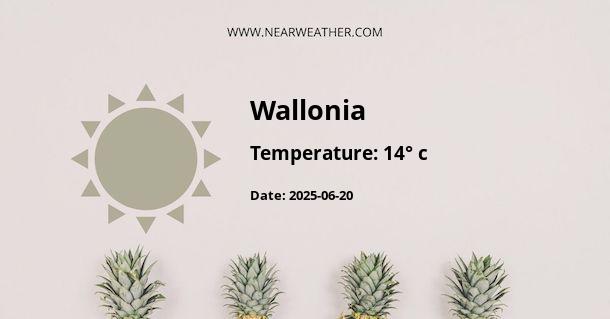Weather and Climate in the Walloon Region, Belgium
The Walloon Region, located in the southern part of Belgium, experiences a temperate maritime climate characterized by mild temperatures, moderate rainfall, and four distinct seasons. Understanding the weather patterns and climate of the Walloon Region is essential for residents and tourists alike to plan outdoor activities, agricultural practices, and other aspects of daily life.
Seasonal Weather Patterns
In the Walloon Region, each season brings its own unique weather conditions.
| Season | Average Temperature | Precipitation |
|---|---|---|
| Spring (March to May) | 8°C to 16°C | High rainfall, occasional thunderstorms |
| Summer (June to August) | 17°C to 23°C | Moderate rainfall, occasional heat waves |
| Autumn (September to November) | 7°C to 14°C | Increasing rainfall, foggy conditions |
| Winter (December to February) | 1°C to 6°C | Occasional snowfall, frosty conditions |
It is important to note that these are average values, and actual weather conditions can vary from year to year.
Climate Data
The Walloon Region's climate is influenced by its proximity to the Atlantic Ocean and the North Sea. The region experiences relatively mild temperatures throughout the year, with a significant amount of rainfall.
The following chart illustrates the average monthly temperature and precipitation in the Walloon Region:
As shown in the chart, the Walloon Region experiences relatively consistent precipitation throughout the year, with slightly higher levels in the spring and autumn months. The temperatures are milder in comparison to other continental climates, contributing to the region's lush and green landscapes.
Extreme Weather Events
While the Walloon Region generally experiences mild weather, it is not immune to extreme weather events. The region can occasionally experience heavy rainfall leading to flooding, especially in low-lying areas. Additionally, rare occurrences of heat waves in the summer and cold snaps in the winter can impact the region.
"The Walloon Region's susceptibility to heavy rainfall and flooding requires proactive measures to manage its impact on communities and infrastructure." - Belgian Meteorological Institute
Impact on Agriculture and Tourism
The weather and climate of the Walloon Region play a significant role in shaping its agricultural practices and tourism industry. The moderate temperatures and consistent rainfall create favorable conditions for agriculture, particularly the cultivation of crops such as grains, sugar beets, and potatoes. Additionally, the region's picturesque landscapes and comfortable weather during the spring and summer months attract tourists interested in outdoor activities, hiking, and exploring historic sites.
Conclusion
The Walloon Region's temperate maritime climate contributes to its lush greenery, diverse agricultural landscape, and suitability for outdoor activities. Understanding the seasonal weather patterns and climate data is crucial for residents, farmers, and businesses to make informed decisions and adapt to the region's weather variability.
With its mild temperatures, moderate rainfall, and occasional extreme weather events, the Walloon Region offers a unique climate experience that shapes the lifestyle and activities of its inhabitants.
A - Wallonia's Latitude is 50.500000 & Longitude is 4.750000.
A - Weather in Wallonia is 1° today.
A - Climate Conditions in Wallonia shows clear sky today.
A - Humidity in Wallonia is 81% today.
A - Wind speed in Wallonia is 6.48 km/h, flowing at 142° wind direction. today.
